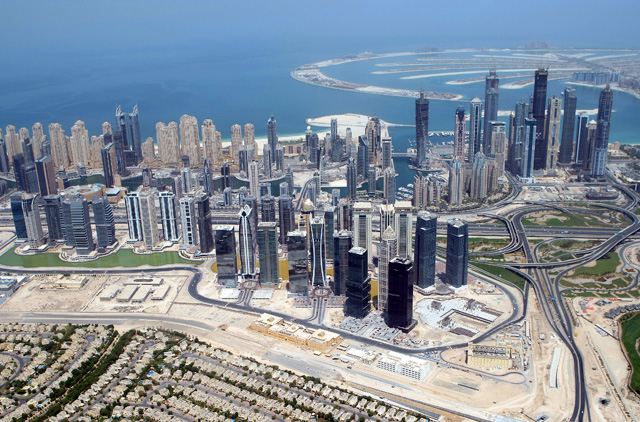The Gulf states are moving steadily towards having more diversified economies, with the consistently high oil prices until mid-2014 contributing greatly to the implementation of key projects in industry and services as well as for nuclear and solar energy. This is especially in the UAE and Saudi Arabia.
As the scale of their achievements gain in profile, the attacks from overseas against the Gulf states get more ferocious, with an aim to belittle what has been done or to cast doubts on them. Recently, the rating agency Standard & Poor’s led such a campaign by lowering ratings on some Gulf economies due to the low oil prices.
In fact, the ratings of major US agencies have become similar to weather forecasts by metrological centres that rarely come true when the forecasted rainy weather turns sunny and vice versa. For example, some projections by S&P made before the global financial crisis were proven wrong, leading many investors to incur massive losses as a result of listening to its assessments, which were utilised to serve the interests of certain parties that achieved imaginary profits.
Today, these agencies are repeating the wrong assessments with regards to the GCC economies, most of which have enormous financial capabilities that allow them to cope with the sharp fall in oil prices — at least during the coming years, especially as the International Energy Agency expects oil prices to rise gradually.
Unlike S&P, Christine Lagarde, Managing Director of the International Monetary Fund, highlighted the ability of the Kuwaiti economy and those of the UAE, Saudi and Qatari economies to grow and overcome the phase of low oil prices due to their financial reserves. Speaking about Kuwait’s economy during the ‘Islamic Finance: Meeting Global Aspirations’ summit, Lagarde said: “Your economy is strong and your country has no real budget deficit.“
Meanwhile, Kuwait’s Finance Minister Anas Al Saleh said: “Kuwait will not stop or put on hold any development project”. And, this is similar to the stance adopted by most of the Gulf states, which are moving ahead with their development programmes.
It is true there are financial measures that have to be taken, such as reduce unnecessary spending, consider imposing value added tax (VAT) collectively, and review subsidy policies. However all these measures are positive and are in the interest of Gulf economies over the long term.
Otherwise, the GCC states have the financial wherewithal available for their economic strategies. They can resort to these instruments if necessary, given that the public debt does not constitute a large proportion of the GDP of most Gulf states. The combined public debt as a percentage of the GDP is low for these countries and, therefore, they can borrow from global capital markets through issuing of bonds or sukuk.
In addition, GCC banks enjoy significant cash liquidity, and hence the Gulf economies can issue credit instruments in their local currencies to avoid the risk of external debt. Saudi Arabia did so during the previous wave of low oil prices at the end of the 1990s and the beginning of the new millennium.
There are other channels available, such as withdrawals from the reserves that have accumulated in recent years thanks to the then high oil prices, coupled with the possibility of increasing non-oil revenues in multiple ways.
It seems that this overall picture is clearer to another credit rating agency, Moody’s, which unlike S&P, has maintained a stable outlook for the Gulf due to their strong financial conditions. The assessment suggests the Gulf economies will achieve optimum growth this year and in the coming years and in line with similar estimates by neutral sources.
— Dr Mohammad Al Asoomi is a UAE economic expert and specialist in economic and social development in the UAE and the GCC countries.













